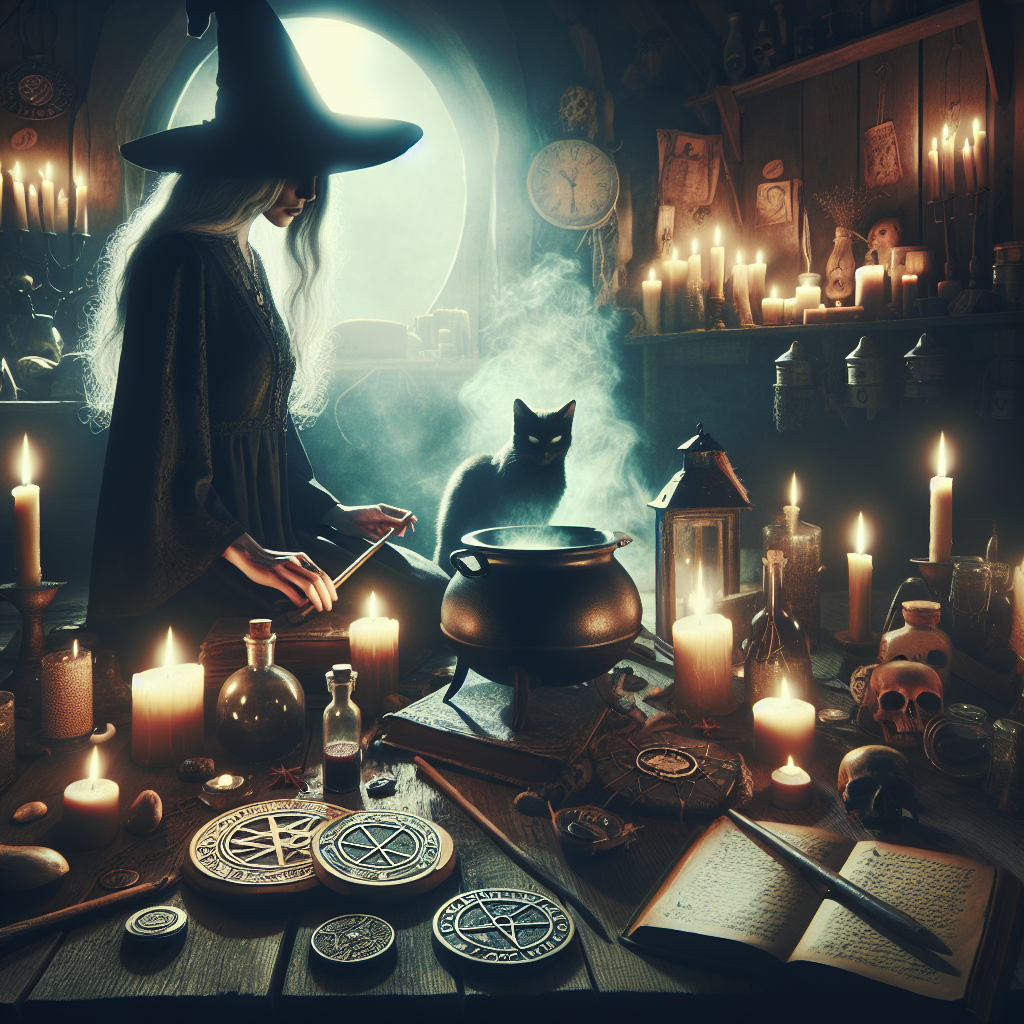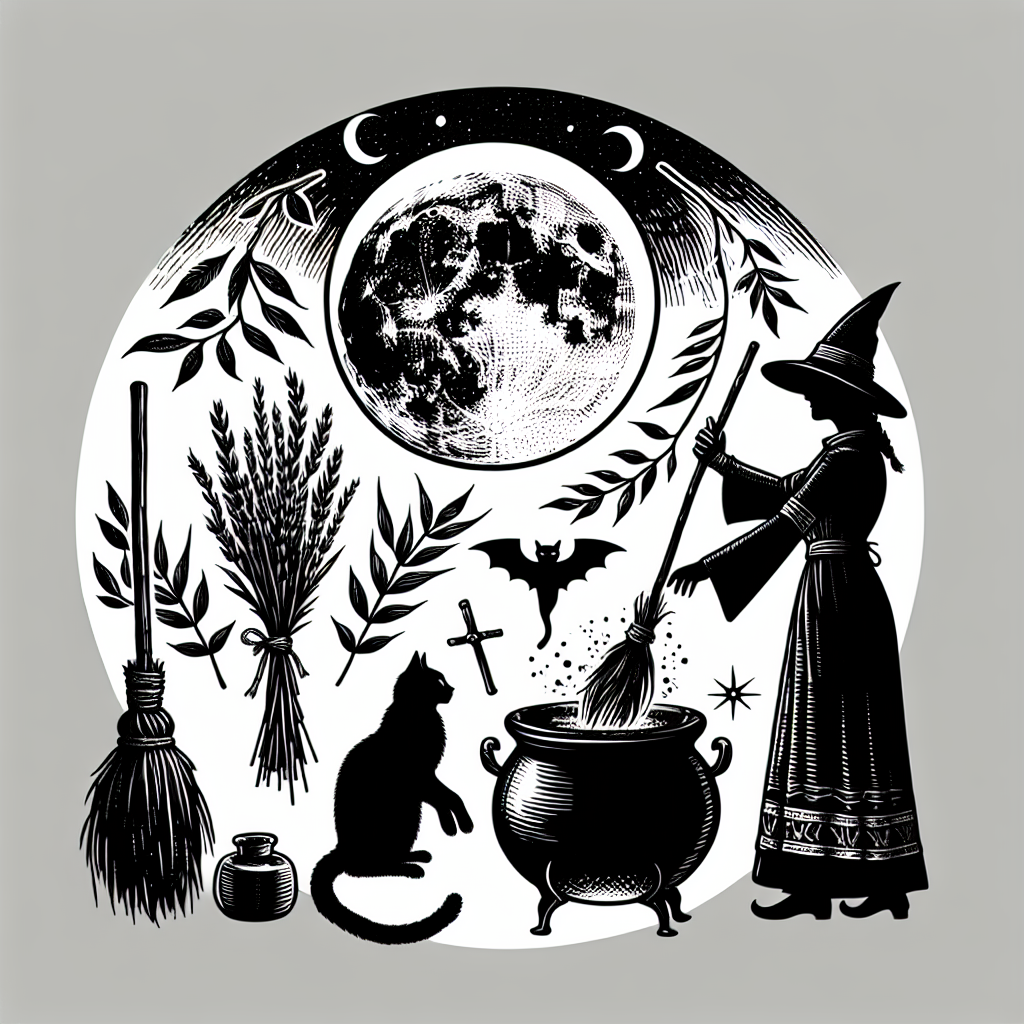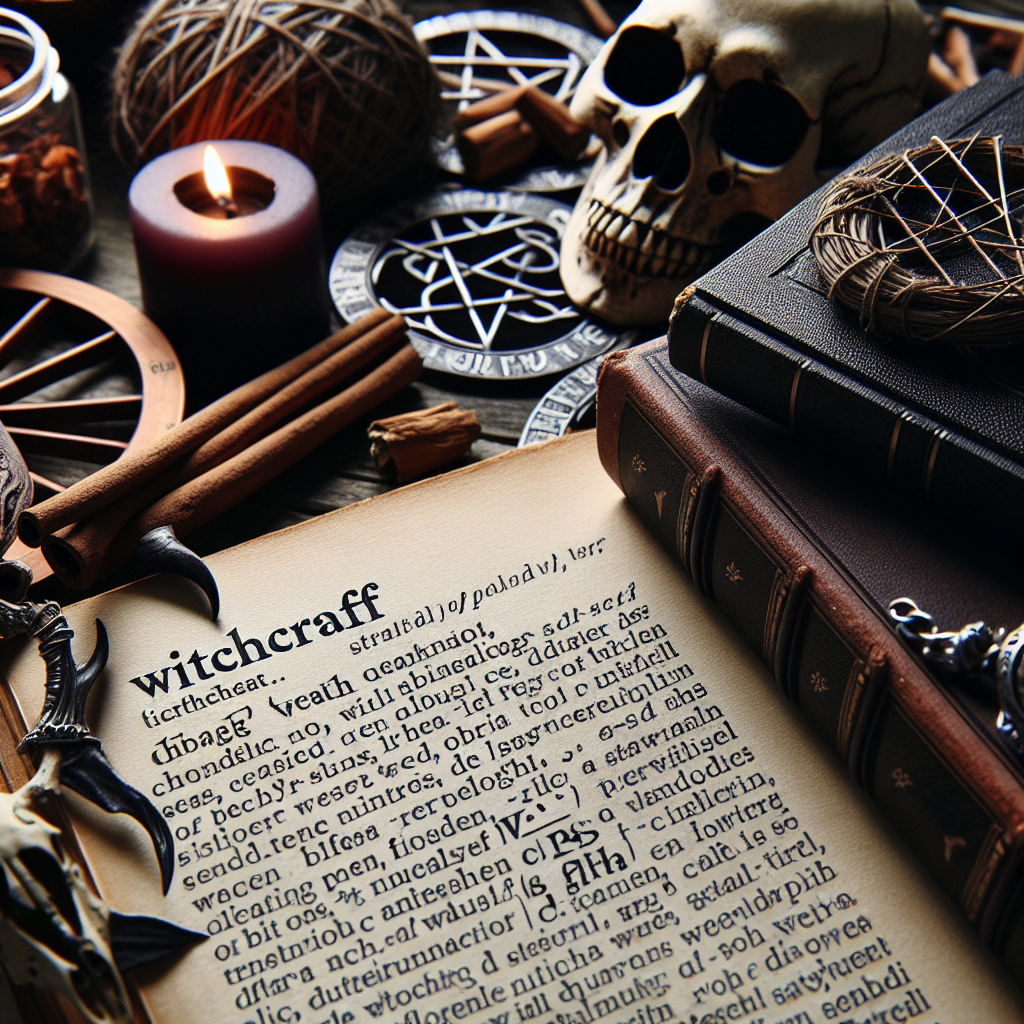As an Amazon Associate I earn from qualifying purchases.

Witchcraft, often associated with the wielding of supernatural powers or the practice of sorcery, has captivated human imagination across cultures and centuries. Its definition, loaded with cultural nuances and varied interpretations, continues to evolve. Historically, definitions of witchcraft have been shaped by religious, social, and cultural contexts, often tied to fears of malevolent magic and the persecution of those believed to practice it.
The roots of the term “witchcraft” stretch back to ancient times when many societies believed that certain individuals could access otherworldly powers. In medieval Europe, this concept became sinister and was interwoven with Christian theology, leading to the infamous witch hunts and trials. Accused witches, often women, were subjected to torture and execution, particularly during the 16th and 17th centuries. The notion of witchcraft was largely framed by authorities as a diabolical pact with the devil, designed to harm or manipulate others for personal gain.
In contemporary times, however, the definition of witchcraft has shifted significantly. It is now often associated with Pagan religions like Wicca, where it is seen in a positive light, regarded as a spiritual practice that honors the natural world and uses magic for healing and personal growth. This modern interpretation detaches itself from the malevolence ascribed to it in the past and is instead embraced by a growing community as a source of empowerment.
Interestingly, modern media has also played a role in reshaping the perception of witchcraft. With over half a million books sold in the ‘Harry Potter' series alone, pop culture has re-imagined witches and wizards as heroes and heroines with a wide array of magical abilities, further distancing the concept from its dark historical associations. This phenomenon demonstrates the significant departure from the fear and stigma that once surrounded witchcraft, towards a more nuanced and complex understanding of it in contemporary society.
Today, witchcraft encompasses a broad spectrum of beliefs and practices, yielding no single definition that can capture its full breadth. From the feared sorcerers of yesteryears to the diverse practitioners of the present, the term continues to hold a place of intrigue and cultural significance across the globe. With an estimated 1 to 1.5 million Americans openly practicing Wicca or paganism today, witchcraft remains a fascinating component of the mosaic of spiritual beliefs and systems that reflect humanity's ongoing quest for knowledge, power, and connection to something greater.
“`html
What is the Definition of Witchcraft in Historical and Modern Contexts?
“`
Witchcraft has been defined and redefined throughout history, evolving from ancient practices steeped in mystery and superstition to modern spiritual paths that emphasize personal empowerment and connection to the natural world. Historically, witchcraft was often associated with malevolent magic and the wielding of supernatural powers for harmful purposes, leading to widespread witch hunts and trials. In contrast, contemporary witchcraft often involves the practice of Wicca or similar belief systems that highlight ethical guidelines such as the Wiccan Rede's “An it harm none, do what ye will.” The definitions also encompass a spectrum of folk practices, ceremonial magics, and shamanistic activities. At its core, witchcraft today is frequently seen as a form of paganism, celebrating seasonal cycles and venerating the Earth and its energies. In the following sections, we'll delve deeper into the various manifestations of witchcraft from its origins to present-day practices, demystifying its purposes and traditions to understand its place in modern society.
Witchcraft: A Historical Overview
Witchcraft, at its core, involves practices and beliefs surrounding the use of supernatural powers or magic for various purposes, which can range from healing to harm, depending on the cultural context. Traditionally, witchcraft has been feared and condemned by mainstream societies, often due to its association with evil and the devil, particularly in the Western world. This what is witchcraft definition takes us into the vast and complex domain where the supernatural intersects with the human experience.
In historical terms, witchcraft has been perceived differently across various civilizations and eras. In pre-Christian traditions, practitioners known as witches or wise ones held roles as healitem with knowledge of herbal remedies, midwifery, and other practices today associated with healing and shamanism. The ancient Romans, for instance, had their own form of witchcraft called “strigae”, which mixed spells with harmful practices.
With the spread of Christianity, these traditional figures often came into conflict with the new religious authorities, who saw their practices as a challenge to the Christian view of the divine order. This shift is evident especially during the Early Modern period, where the infamous witch hunts and trials occurred, and where the what is witchcraft definition morphed into an accusation against those believed to worship Satan and perform malevolent magic.
Contemporary Conceptions of Witchcraft
In the present day, witchcraft has a much more diverse and nuanced definition. Neo-Paganism, for example, encompasses several religions that incorporate witchcraft, such as Wicca. These modern-day practitioners often view witchcraft as a benign, nature-centered spiritual practice emphasizing personal growth, healing, and positive magic.
Moreover, cultural anthropology has expanded the what is witchcraft definition to include a wide array of indigenous magical practices across the globe. In some African communities, witchcraft is understood as a powerful force that can be used for both beneficial and malevolent purposes, deeply embedded in the social and spiritual fabric of society.
Outside of religious practice, witchcraft has also been reclaimed as a symbol of female empowerment and resistance against patriarchal structures. This reconceptualization is part of broader movements that challenge the historically negative portrayal of witches.
Misconceptions and Legal Implications
Despite these evolving definitions, misunderstandings about witchcraft persist. The sensationalism of witchcraft in popular media often distorts its true nature, portraying witches as either malevolent or fanciful creatures. Consequently, there are still places where accusations of witchcraft can lead to social ostracism, legal penalties, and even violence.
In some countries, laws against witchcraft are still enforced, highlighting the ongoing tension between traditional beliefs and legal justice systems. The actual practices categorized under these laws can vary greatly, showing the lack of a standardized legal definition of witchcraft.
Global Beliefs and Statistics
The belief in and practice of witchcraft is not limited to one geographical area or culture. According to a 2014 survey by the Pew Research Center, approximately half of the people in sub-Saharan Africa believe in witchcraft. This statistic is a stark reminder of the powerful role witchcraft still plays in the lives of many around the world, illustrating its deeply rooted presence across various societies.
In essence, witchcraft's definition has evolved from malevolent sorcery condemned by religious authorities, to a complex social phenomenon that includes a myriad of spiritual practices, cultural rituals, and individual beliefs. Despite modern legal systems and advancements in science, witchcraft continues to hold significant cultural and religious weight around the globe.
- What is the basic definition of witchcraft?
Witchcraft is commonly defined as the practice of, and belief in, magical skills and abilities that are able to be exercised by individuals and certain social groups.
- How has the definition of witchcraft changed over time?
Historically, witchcraft has been associated with malevolent powers and practices used to harm others. However, contemporary views often associate it with nature-based religions, spirituality, and self-empowerment, displaying a shift from its demonized past to a more diverse and nuanced understanding.
- What are some common misconceptions about witchcraft?
A common misconception is that witchcraft is inherently evil or is synonymous with Satanism. In reality, most modern witchcraft traditions have no connection to Satan or evil, and many practitioners focus on healing and positive magic.
- Is witchcraft a religion?
Witchcraft itself is not a single religion but a set of practices that can be part of various religions and spiritual paths. For example, Wicca is a modern, witchcraft-based religion that emphasizes nature veneration and the practice of magic.
- Were the historical witch trials based on actual practices of witchcraft?
Many of those accused and prosecuted during historical witch trials were not actual practitioners of witchcraft. These trials were often based on superstition, fear, and false accusations, rather than evidence of genuine magical practices.
*/
- Can witchcraft be practiced by anyone, or do you have to be born into it?
Many modern forms of witchcraft believe that anyone can practice magic and become a witch; it is not necessarily something one has to be born into. Learning and dedication to the craft are typically the most important factors.
- What role does nature play in witchcraft?
Nature often plays a central role in witchcraft, as many traditions emphasize a deep connection to the natural world. Practices may include working with herbal remedies, celebrating seasonal cycles, and invoking natural elements during rituals.
- Are spells and curses a significant part of witchcraft practices?
While spells and rituals are significant in many witchcraft traditions, they are not exclusively focused on curses. They often involve intentions for healing, protection, love, and other positive outcomes. Curses, if included, are generally considered to be a small and less encouraged aspect of the practice.
- How do modern witches feel about the popular media representation of witchcraft?
Many modern witches have mixed feelings about their portrayal in popular media. Some appreciate the increased visibility and interest in the craft, while others feel that the sensational or stereotypical depictions can perpetuate misinformation and stigma.
Can witchcraft coexist with other religious or spiritual beliefs?
Yes, witchcraft can coexist with other religious or spiritual beliefs. Many contemporary practitioners of witchcraft incorporate aspects of other traditions into their practice, and view witchcraft as a supplemental spiritual approach rather than a mutually exclusive belief system.

Conclusion
Throughout history, the definition of witchcraft has undergone significant evolution, reflecting the shifting beliefs, fears, and social norms of societies. From the early perception of witchcraft as a practice rooted in pagan rituals and natural magic, to its dark association with malevolent sorcery and diabolism during the witch hunts of the Early Modern period, the term has carried deep cultural and emotional implications. In contemporary times, witchcraft is recognized in a more nuanced light, with many reclaiming the term to describe a spiritual practice or belief system that connects individuals to nature, the divine, and personal empowerment, diverging sharply from past pejorative connotations.
This transformation in the understanding of witchcraft demonstrates the fluidity and complexity of cultural constructs, influenced by religion, politics, and social dynamics. Modern witchcraft encompasses a diverse array of practices, from Wiccan rituals to folk traditions and solitary eclectic spiritual paths. However, despite its evolution, the enduring intrigue and mystery surrounding witchcraft continue to captivate the human imagination, indicating that the quest to define witchcraft is as much about understanding our own perceptions and biases as it is about the actual practices and beliefs of those labeled as witches. As society progresses, the definition of witchcraft is likely to keep evolving, mirroring the changing landscapes of cultural identity and spiritual exploration.
Amazon and the Amazon logo are trademarks of Amazon.com, Inc, or its affiliates.


